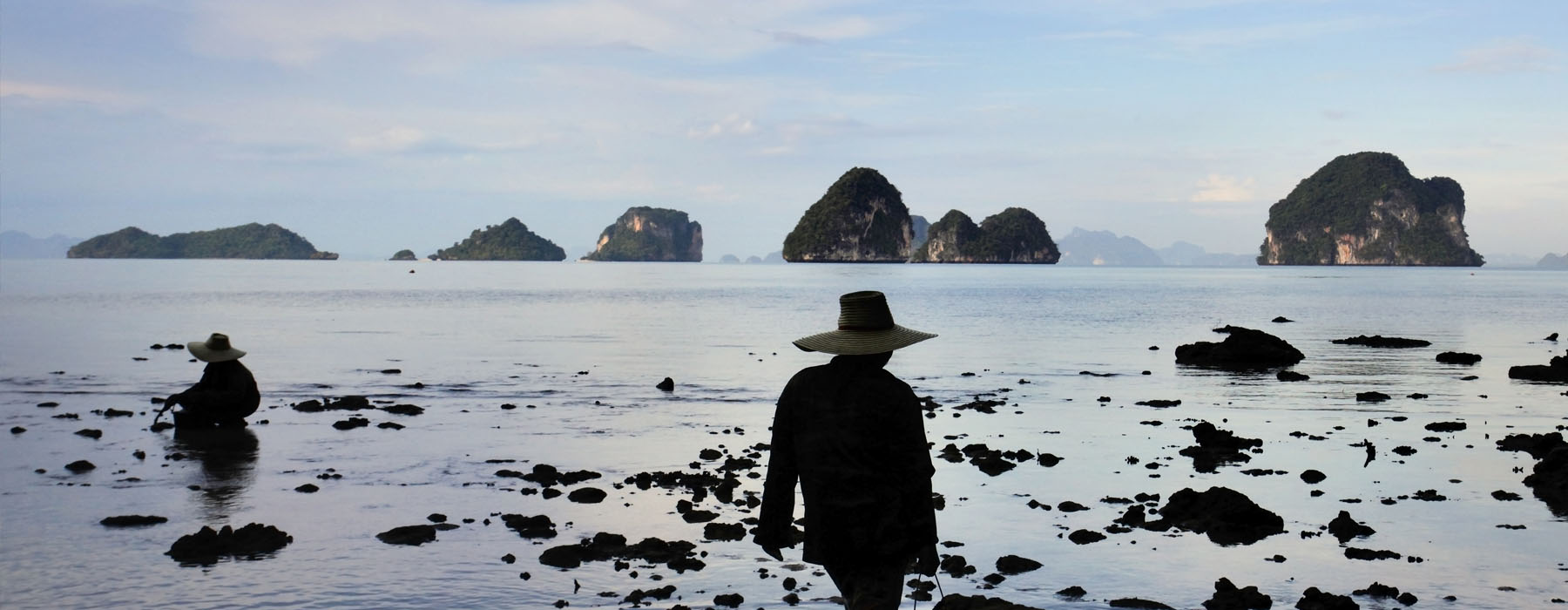January
February
March
April
May
June
July
August
September
October
November
December
Thailand has a humid tropical climate and deciding on the best time to visit Thailand can be tricky, which is where we come in. In the northern part of the country, there are three major seasons, while south of Bangkok there are only two major weather variations throughout the year. The northern part of Thailand has a dry season that runs from November to May, with high temperatures. From November to February, northern Thailand also experiences a 'cold' season (although temperatures are still high), sometimes influenced by occasional monsoons from the north-east. Lastly, from May to November is the monsoon season; during this period the rains roll in from the south-west and there is a period of sustained rainfall.
In southern Thailand, there are two major seasons. The rainy season runs from April to October on the west coast, and is more concentrated from September to December on the east coast. The rest of the year, the climate is pleasant with high temperatures and far fewer rainy periods. We've put together a detailed overview of the climate in Thailand divided into the main regions to explore, to help you decide when the best time to visit Thailand is.
Bangkok
Thailand's capital city has a hot and humid tropical climate. April sees the highest temperatures in Bangkok, with maximum averages that can exceed 35°C. Conversely, the coolest month in the capital is December, but the maximum average remains very high at 32°C. In Bangkok, the rainy season runs from May to October, but showers are limited, often only lasting for periods of one to two hours. Annual rainfall in Bangkok is 59 inches, with peaks of 11.8 inches in September and just over eight inches in October.
Chiang Mai
Chiang Mai, Thailand's second largest city, is located in the north-western part of the country. There are three seasons there, with the summer period beginning in late March and lasting until the end of May. The maximum temperature can exceed 35°C, and rain bringing relief from the heat is quite rare. The rainy season then begins in May and ends in October. July to September are the wettest months of the year, with nearly eight inches of rainfall in July and August, and close to 10 inches in September. The average annual rainfall is close to 47 inches, while the average annual temperature is 25.6°C.
Koh Samui
The island of Koh Samui, south of Bangkok and off the east coast of Thailand, is pleasant all year round. Temperatures vary regularly between 25°C and 34°C. As with most other climatic zones in Thailand, there are three identifiable seasons. The first is the so-called hot season from February to May, then the cool season from October to January, while the monsoon season occurs between September and November. Although not in the main rainy season period, there are sometimes rainy spells during the months of July to September. They tend to only last a few hours, and are often concentrated at the end of the day. The rains in Koh Samui are also much closer to refreshing tropical showers than torrential monsoons.
Krabi
Krabi has an excellent climate during the hottest period between April and May. Temperatures range from a minimum average of 25°C to a maximum average of 36°C. There can be rains and storms at this time of the year, but they tend to be limited and help cool the air. Between November and March, the average maximum temperature is comfortable, close to 29°C, and rainfall is less pronounced. Watch out for the cool morning breeze, though, as it can be quite fresh. September and October are the rainy months in Krabi.
Phuket
Situated in south-western Thailand, Phuket island has a humid tropical climate, with relatively stable temperatures throughout the year. In Phuket, heat, humidity, and rain are the norm. There are, however, two main seasons in Phuket. The monsoon season, also known as the rainy season, runs from May to October. Phuket gets close to 86 inches of rainfall a year. It rains there for more than 150 days each year, with a high concentration of these rainy episodes in September. The other season is the dry season, which begins in December and ends in early April. In January and February, the skies are clear and there's almost no rain.



